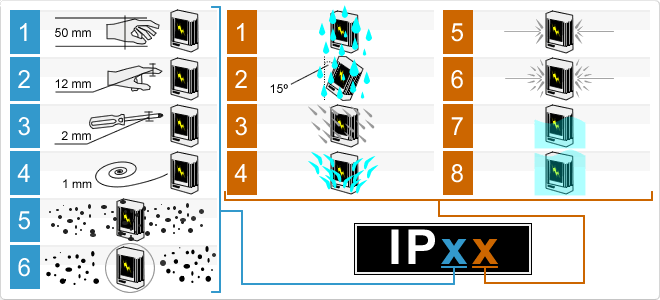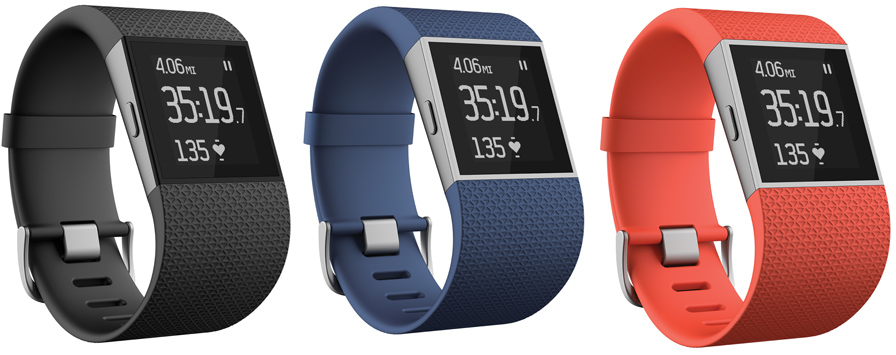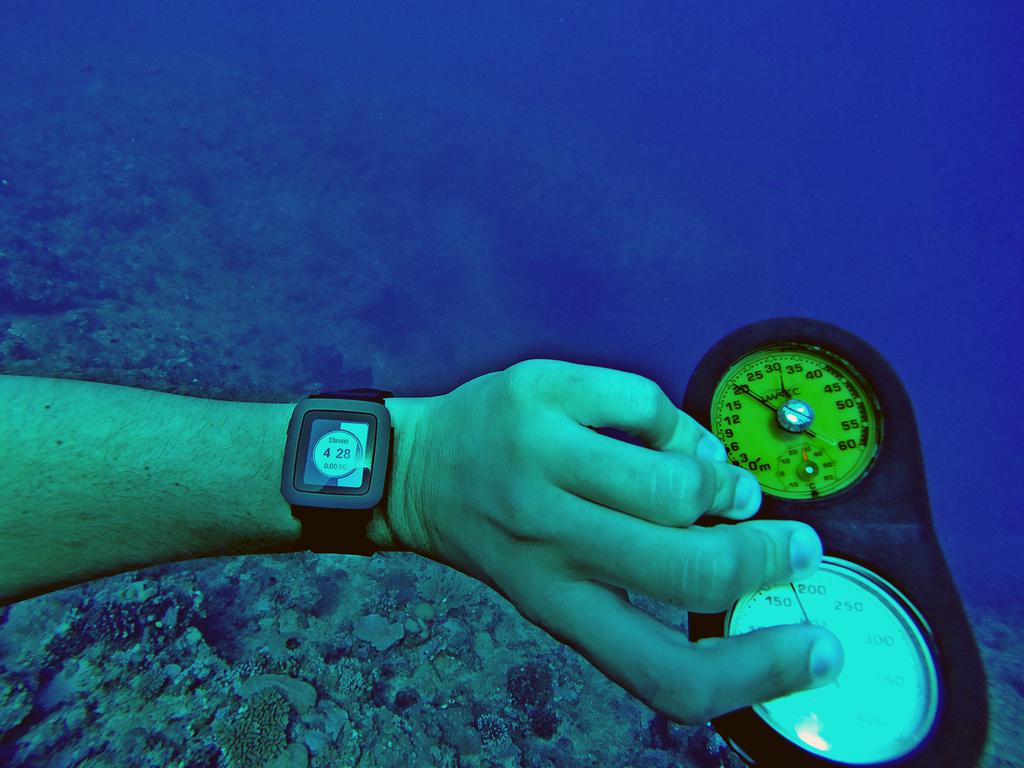Protect devices from dust and moisture. Understanding the IP standard notation

We have been dealing with various devices for many years. During this time thousands and thousands of gadgets have passed through our hands, and our customers have asked us a great many questions about them. Among all these questions, there are those that constantly repeat. More often than others, there are questions about the dust and water protection of gadgets. And we know why. The fact is that almost all manufacturers indicate compliance with their device standard IP .
Also, companies developing gadgets like to write that their device can withstand a pressure of 3-5 atmospheres or even more. Buyers of such gadgets, trying to follow the logic, believe that if 5 atmospheres are indicated, it means that the device can be immersed to a depth of 50 meters. And if so, that you can swim in it for sure, and even more so, you can take a shower. But logic does not always work where marketers operate. Let's still try to figure out what it all means.
IPHH - what does it mean?
So, the IP standard is an international standard that classifies the degree of protection of devices against the penetration of solid particles of the smallest fraction (in fact, dust) and water. By the way, the degree of protection provided by the shells (IP code) is determined according to GOST 14254-96. The standard was developed on the basis of the IEC 60529 standard of 1989 and entered into force on January 1, 1997. The International Protection Rating introduces the designation IPXX, where instead of “XX” there are numbers. As an example, the two most common standards for user devices are IP67 and IP68.
')

Here the first number indicates the degree of protection against foreign solid bodies (dust, metal, human fingers, etc.). The minimum protection is 0 (the device is only suitable for use in the case), the maximum is 6 (full protection against dust).
The second number indicates the degree of protection against moisture penetration. The minimum protection is 0 (any moisture can damage the device), the maximum - 8 (the device is not afraid of water, it can be immersed to a depth of more than 1 meter).

Water resistance tests are carried out in such boxes.
After the numbers, sometimes letters can also appear that provide additional information about the degree of protection of the device against external factors. But for consumer devices, this type of designation is rare, so now we will not consider it. According to Wikipedia, the maximum degree of protection according to IP standard is IP69-K. This is how they mark the enclosures of devices that can withstand high-temperature high-pressure washing. In this case, they even had to introduce additional markings (recall that the generally accepted designation of maximum protection against water is 8, not 9).
| Level | Defence from | Description |
|---|---|---|
| 0 | - | No protection |
| one | Vertical drops | Vertically dripping water should not disrupt device operation. |
| 2 | Vertical drops at an angle of up to 15 ° | Vertically dripping water should not disrupt the operation of the device if it is deflected from the working position at an angle of up to 15 ° |
| 3 | Falling spray | Rain Protection. Splashes fall vertically or at an angle of up to 60 ° to the vertical. |
| four | Spray | Protection against splashes falling in any direction. |
| five | Jet | Protection against water jets from any direction |
| 6 | Sea waves | Protection against sea waves or strong water jets. Water entering the housing should not disrupt the operation of the device. |
| 7 | Short dive to a depth of 1 m | During short immersion, water does not fall in quantities that disrupt the operation of the device. Permanent work in immersed mode is not expected. |
| eight | Dive to a depth of more than 1 m for more than 30 minutes. | The device can work in submerged mode. |
Sometimes instead of one of the numbers in the designation of the degree of protection of a particular gadget, you can see X. For example, IPX7. In this case, the designation says that the device has not been tested for protection against dust, but it is not afraid of water.
Meters and atmosphere - and where is the dog buried?
Manufacturers of electronic devices work with the IP standard, but more often they use an alternative rating indicating atmospheres. Garmin, Pebble, Polar and other manufacturers of electronic devices often test their devices themselves in order to determine how well they are protected from water.
| Pressure / depth | Protection |
| 3 atm (30 m) | The device is not afraid of splashing water, but you can not take a shower in it, you can not swim, swim, and even more so, dive. Better to keep the gadget out of the water |
| 5 atm (50 m) | The device is well protected from water, you can not remove it in the pool, go fishing, swim and perform any water works that do not require immersion |
| 10 atm (100 m) | Can be used in almost any water works, swim and submerge for some time. Fans of scuba diving can easily work with such devices. |
| 20 atm (200 m) | You can dive to a relatively large depth, that is, for example, dive with scuba gear, use the device when working in sea water |
Inexperienced users, seeing the designation of 30-50 m, immediately decide that with such a gadget you can dive, swim, or even keep the device in the aquarium. In fact, as you can see, the device with the designation of 3 ATM or 30 meters of water is afraid, and very much.

Another interesting fact is that manufacturers understand labeling in their own way. For example, the same Fitbit Surge bears a mark of 5 ATM. In a good way, this means that it can not be removed while swimming. But manufacturers say that you shouldn’t swim in this gadget, as Surge can not withstand shots during the swim. What is the matter? And the fact that the water resistance of the devices are tested in still fresh water (in most cases). During the voyage, the pressure can change abruptly, and the water will still find a loophole, ruining the gadget.

Diving enthusiasts sometimes put their devices at high risk
But with Pebble Time, the situation is different. Developers everywhere indicate the degree of protection in the "30 m", but in the description of the device states that with it you can swim in the pool. But this does not mean that, wearing this watch, you can dive into them at sea. Sea water is not at all that fresh, it contains much more salt, and this can lead to damage to the device. As mentioned above, most devices are tested in fresh, not salty, sea water.
It is worth knowing
- Most of the water resistance tests are carried out in fresh water. If the manufacturer did not indicate that the gadget is not afraid of salt water, then, then testing in the sea or ocean was not conducted;
- Tests are conducted at a positive temperature, usually 15-35 degrees Celsius. If in watches that are not afraid of water at normal temperature, go to the sauna or bath, they can spoil;
- The leather strap is not waterproof;
- If the device is not afraid of water, when immersed in water, check that all openings of the gadget, which must be closed, are closed;
- A gadget with minimal protection from water does not necessarily break if you take a shower or swim in it. But there is no guarantee that if you took a shower twice and everything was fine, then nothing will happen the third time;
- It is better not to press the screen or the physical buttons of the device under water.
First of all - the instruction
We at Madrobots believe that it is best to carefully read the instructions for the device. Of course, not everyone does it, but if you are going to go to the sea or even just take a shower in a new device, it is better to read the instructions from the manufacturer.
And in any case, it is worth remembering that electronic devices are complex systems that consist of many parts. No matter how reliable the device is, once again it is better not to risk it, so that later it would not be painfully painful.
Source: https://habr.com/ru/post/372827/
All Articles